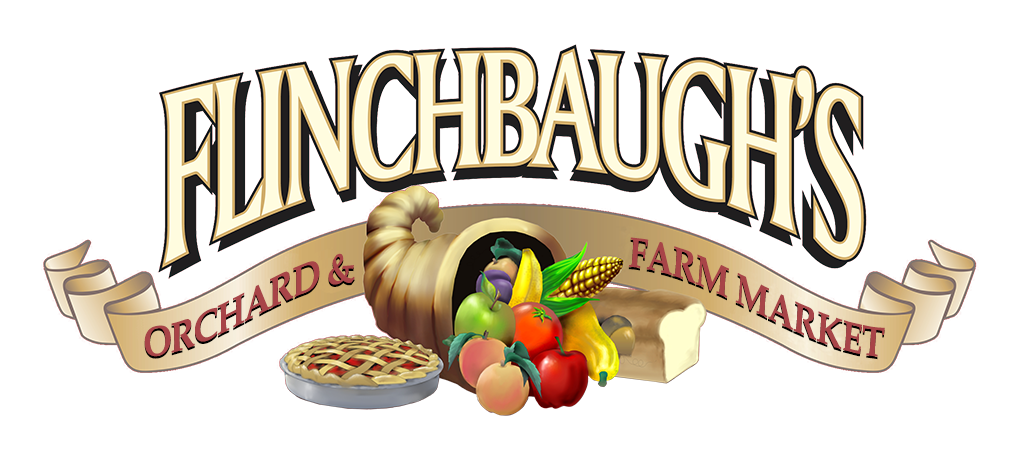Apple Varieties Browse our range of apples and their flavor.
Cameo
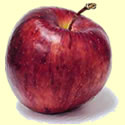 This new apple with an old-world name was discovered as a chance seedling in the late 1980s in Washington state. Cameo makes its cameo appearance beginning in October. It bears red stripes over a cream-colored background. Extra-crispy Cameo has a sweet-tart taste. This apple resists browning, making it a natural choice for salads and fruit trays. Cooks, please note that Cameo’s extra-denseness takes a bit longer to cook. A brand new apple to Flinchbaugh’s Orchard.
This new apple with an old-world name was discovered as a chance seedling in the late 1980s in Washington state. Cameo makes its cameo appearance beginning in October. It bears red stripes over a cream-colored background. Extra-crispy Cameo has a sweet-tart taste. This apple resists browning, making it a natural choice for salads and fruit trays. Cooks, please note that Cameo’s extra-denseness takes a bit longer to cook. A brand new apple to Flinchbaugh’s Orchard.
Cortland
 This variety originated in the late 1890s in New York state, a cross between McIntosh and Ben Davis developed at the New York State Agricultural Experiment Station. Sweeter than its McIntosh parent, with only a hint of tartness. Cortland has tender, snow white flesh that resists browning, making it an excellent choice for salads, kabobs and garnishes. The Cortland is available September through April.
This variety originated in the late 1890s in New York state, a cross between McIntosh and Ben Davis developed at the New York State Agricultural Experiment Station. Sweeter than its McIntosh parent, with only a hint of tartness. Cortland has tender, snow white flesh that resists browning, making it an excellent choice for salads, kabobs and garnishes. The Cortland is available September through April.
Fuji
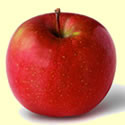 Developed in Japan and named after Mt. Fuji, this apple is a cross between two American varieties, Rall’s Janet and Red Delicious. This variety’s popularity is skyrocketing, thanks to its sweet flavor and firmness. Fuji apples are bi-colored, typically striped with yellow and red. Harvested in mid-October, they are available year round and are good keepers, storing well for up to 3 months.
Developed in Japan and named after Mt. Fuji, this apple is a cross between two American varieties, Rall’s Janet and Red Delicious. This variety’s popularity is skyrocketing, thanks to its sweet flavor and firmness. Fuji apples are bi-colored, typically striped with yellow and red. Harvested in mid-October, they are available year round and are good keepers, storing well for up to 3 months.
Gala
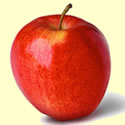 This variety originated in New Zealand, a cross between Kidd’s Orange Red and Golden Delicious. The Royal Gala strain was named in honor of Queen Elizabeth II, who deemed it her favorite during a visit to New Zealand. It was brought to the United States in the early 1970s, and is now one of the country’s most popular apples. This crispy, juicy, very sweet apple is ideal for snacking. Galas can vary in color, from cream to red- and yellow-striped. U.S.-grown Galas are harvested beginning in mid-September, and are typically available year-round.
This variety originated in New Zealand, a cross between Kidd’s Orange Red and Golden Delicious. The Royal Gala strain was named in honor of Queen Elizabeth II, who deemed it her favorite during a visit to New Zealand. It was brought to the United States in the early 1970s, and is now one of the country’s most popular apples. This crispy, juicy, very sweet apple is ideal for snacking. Galas can vary in color, from cream to red- and yellow-striped. U.S.-grown Galas are harvested beginning in mid-September, and are typically available year-round.
Ginger Gold
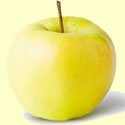 A Virginia grower discovered this apple sprouting amid the ruins of a hurricane-devastated orchard in the late 1960s, and named this greenish-gold, sweet-tart apple after his sweetheart. Its parentage includes Albemarle Pippin, a favorite apple of Thomas Jefferson. This early-season Eastern apple is very slow to turn brown so is great for salads and fruit platters, and it cooks well, too. Available starting in mid-August.
A Virginia grower discovered this apple sprouting amid the ruins of a hurricane-devastated orchard in the late 1960s, and named this greenish-gold, sweet-tart apple after his sweetheart. Its parentage includes Albemarle Pippin, a favorite apple of Thomas Jefferson. This early-season Eastern apple is very slow to turn brown so is great for salads and fruit platters, and it cooks well, too. Available starting in mid-August.
Golden Delicious
This old favorite was discovered as a chance seedling in 1890 in Clay County, W.Va., and was originally named Mullin’s Yellow Seedling. Renamed in 1916, its parents are thought to be Golden Reinette and Grimes Golden. Goldens have a pale yellow skin, sometimes with a red blush. Mellow and sweet, all-purpose Goldens are great for eating out of hand, baking and salads. Golden’s crisp, pale yellow flesh resists browning, making it a good choice for salads and other dishes. Goldens appear on the market in mid-September, and are available year-round. Cooks, note that you can reduce the amount of added sugar when making pies with Goldens.
Honeycrisp
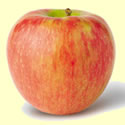 This honey of an apple has a honeyed, mild flavor and a crispness deemed explosive. Crispy, juicy and sweet, this popular newcomer is a cross between a Macoun and a Honeygold. Honeycrisp’s skin is a distinctive mottled red over a yellow background, with coarse flesh. This apple is good for snacking, salads and sauce-making, and stores well. Honeycrisp is college educated, developed by the University of Minnesota. Harvested beginning in late September.
This honey of an apple has a honeyed, mild flavor and a crispness deemed explosive. Crispy, juicy and sweet, this popular newcomer is a cross between a Macoun and a Honeygold. Honeycrisp’s skin is a distinctive mottled red over a yellow background, with coarse flesh. This apple is good for snacking, salads and sauce-making, and stores well. Honeycrisp is college educated, developed by the University of Minnesota. Harvested beginning in late September.
Jonagold
 Jonagold apples tend to be large in size and have excellent dessert flavor. They have a shorter season than many apples, making them a real treat in the fall and winter months. Jonagold apples originated in 1953 at the New York State Agricultural Experiment Station in Geneva, New York. Jonagold apples are a cross between Golden Delicious and the Jonathan, an old American variety from the 1820s.
Jonagold apples tend to be large in size and have excellent dessert flavor. They have a shorter season than many apples, making them a real treat in the fall and winter months. Jonagold apples originated in 1953 at the New York State Agricultural Experiment Station in Geneva, New York. Jonagold apples are a cross between Golden Delicious and the Jonathan, an old American variety from the 1820s.
Lodi
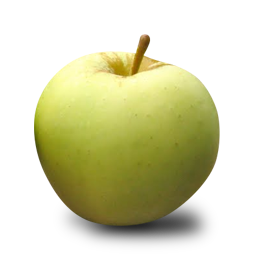
Pink Lady
Just like their name implies, Pink Lady apples have a bright pink exterior that matches well with the apple’s dense skin, zippy, tart flavor, and effervescent finish
Red Delicious
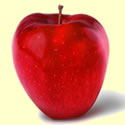
Sansa

Summer Rambo
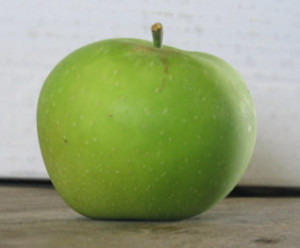
Apple photos courtesy of New York Apple Association.

